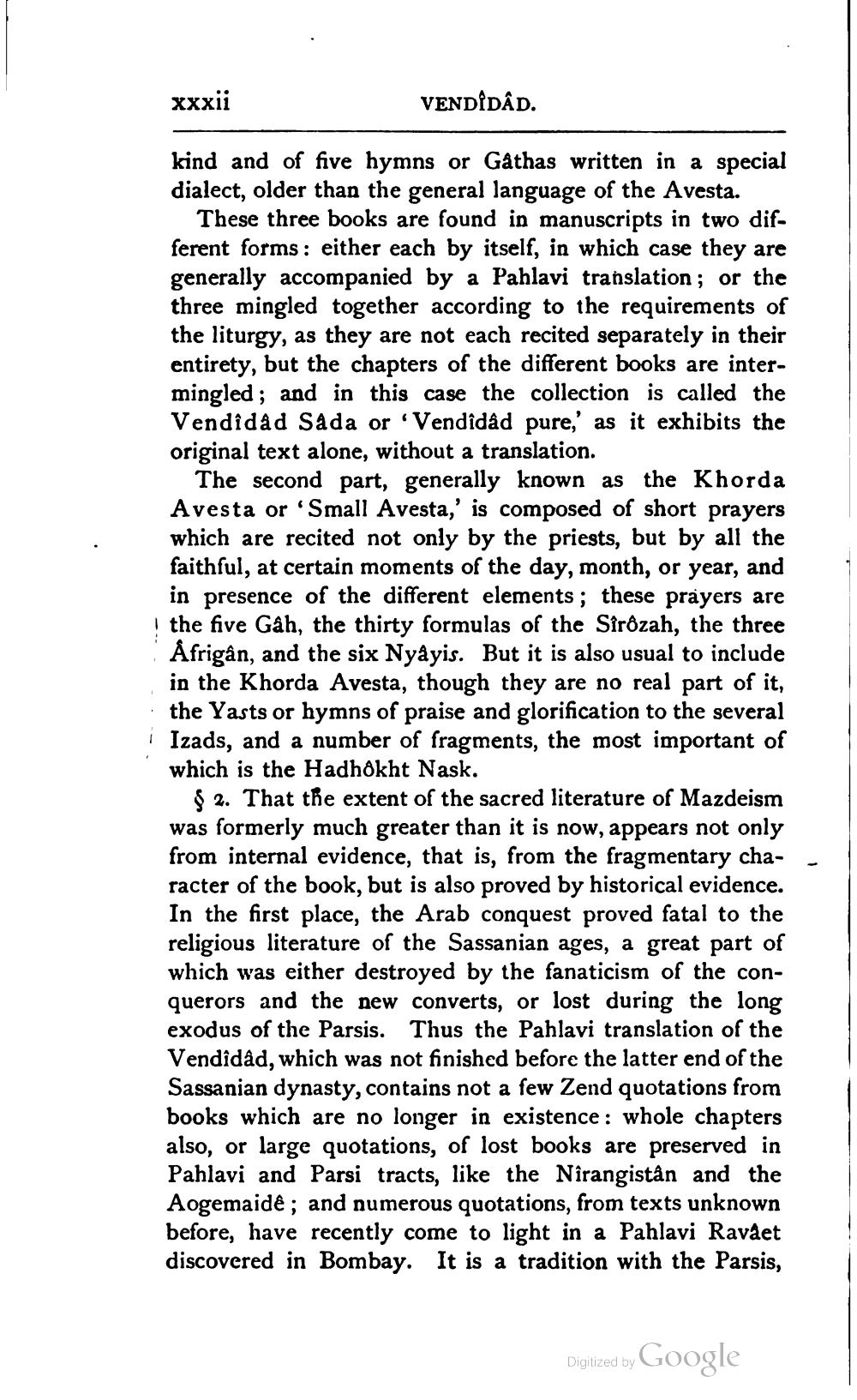________________
xxxii
VENDIDAD.
kind and of five hymns or Gåthas written in a special dialect, older than the general language of the Avesta.
These three books are found in manuscripts in two different forms: either each by itself, in which case they are generally accompanied by a Pahlavi translation; or the three mingled together according to the requirements of the liturgy, as they are not each recited separately in their entirety, but the chapters of the different books are intermingled; and in this case the collection is called the Vendidad Sada or Vendidad pure,' as it exhibits the original text alone, without a translation.
The second part, generally known as the Khorda Avesta or 'Small Avesta,' is composed of short prayers which are recited not only by the priests, but by all the faithful, at certain moments of the day, month, or year, and in presence of the different elements; these prayers are ! the five Gâh, the thirty formulas of the Sîrôzah, the three
Afrigân, and the six Nyayis. But it is also usual to include in the Khorda Avesta, though they are no real part of it, the Yasts or hymns of praise and glorification to the several Izads, and a number of fragments, the most important of which is the Hadhôkht Nask.
§ 2. That the extent of the sacred literature of Mazdeism was formerly much greater than it is now, appears not only from internal evidence, that is, from the fragmentary cha- - racter of the book, but is also proved by historical evidence. In the first place, the Arab conquest proved fatal to the religious literature of the Sassanian ages, a great part of which was either destroyed by the fanaticism of the conquerors and the new converts, or lost during the long exodus of the Parsis. Thus the Pahlavi translation of the Vendidad, which was not finished before the latter end of the Sassanian dynasty, contains not a few Zend quotations from books which are no longer in existence : whole chapters also, or large quotations, of lost books are preserved in Pahlavi and Parsi tracts, like the Nirangistan and the Aogemaide; and numerous quotations, from texts unknown before, have recently come to light in a Pahlavi Ravaet discovered in Bombay. It is a tradition with the Parsis,
Digitized by
Digitized by Google




